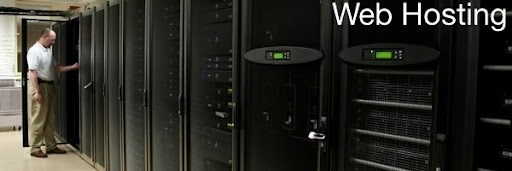A dedicated server is a single computer on a web-hosting network that is leased or rented, and dedicated to just one customer. A service provider monitors the computer’s hardware, network connectivity, and routing equipment, while the customer generally controls and maintains the server software. Dedicated servers are most often used by those who’ve outgrown typical hosting accounts and now require massive amounts of data space and bandwidth, those with mission critical web sites, web hosting companies, or those who have special needs. Dedicated servers are housed in data centers, where service providers can monitor them close-up and have hands-on access to them.
The primary advantage of using a dedicated server over a typical shared hosting account is the sheer amount of resources and control available to you, the customer. In many cases, the client is at liberty to install whatever software they desire, giving them greater flexibility and administrative options. Dedicated server clients do not share resources, as those with shared hosting plans do; but rather, are at liberty to use all the resources available to them.
Managed Servers vs. Unmanaged Servers
There are two types of dedicated servers available today: Managed Dedicated Servers and Unmanaged Dedicated Servers.
An Unmanaged Dedicated Server leaves nearly all the management duties of running a server in the purchaser’s control. The customer in this case, updates software on their own, applies necessary patches, performs kernel compiles and operating system restores, installs software, and monitors security. With this type of dedicated server, the consumer is solely responsible for day-to-day operations and maintenance. The service provider, in turn, monitors the network, repairs hardware problems, and troubleshoots connectivity issues. Additionally, some service providers offer partial management of services, such as network monitoring, software upgrades and other services, but leave the general upkeep of the server in the hands of the client. An unmanaged dedicated server is best for someone with server management experience.
A Managed Dedicated Server is generally more proactively monitored and maintained on the part of the service provider. When renting or leasing a managed server, the service provider or host carries out the responsibility of software updates and patches, putting security measures in place, performing hardware replacements, and also monitoring the network and its connection for trouble. In other words, when utilizing a managed dedicated server, the host provider will perform both hardware and software operations. A managed dedication server solution works well for the customer with limited server management experience or limited time in being able to perform the duties necessary to keep a server running and online.
Technical Aspects In Choosing A Server
When choosing a dedicated server, there are several things to consider: Operating System, Hardware options, Space and bandwidth.
The Operating System of a server is similar to that on your own personal computer; once installed, the operating system enables one to perform tasks more simply. There are a bevy of server operating systems available today including Linux-based and Windows-based software. The operating system you choose should be directly relational to what operations your server will be performing, which types of software you’ll need to install and also, what you’re more comfortable with.
Hardware Options are also something to consider when choosing a dedicated server. You’ll need to pick a processor that’s up to the task, the amount of memory you wish installed, firewall options, and the size of the hard drive.
A certain amount of bandwidth is generally included when renting or leasing a dedicated server. Once you ascertained how much bandwidth you will require, you can adjust that limit with your service provider. The space you’ll be given is generally directly relational to the size of your hard drive. Some hosts also give clients the choice of uplink port speed (usually 10Mbps/100Mbps).
